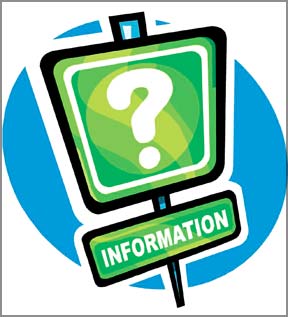Market intelligence for competitive advantage
Marketing and Selling in tough times:
“Keep your organization’s doors and windows
open and keep your ears to the ground” - Anonymous
“Information is power” is a slogan that emphasizes the importance of
quality information for business success. The winners in the marketplace
have in their possession valuable information about the external
marketplace. In this article, I will highlight the key areas about which
market intelligence is required and methods to obtain same.

Competitor Strategy - What is the present marketing strategy followed
by key competitors. Is it a volume or margin strategy? Is the competitor
satisfied with the outcome of the strategy? Is the strategy a short term
or long term one?
How do you obtain information about competitor strategy? One easy
method is to monitor their advertising and promotional strategy.
What is the message communicated? How much has been spent on the
campaign? What mediums have been used?
Duration of the campaign? Another method would be to observe the
competitor in action, out in the market. Keep a close eye on their
distribution methods, frequency of visits to customers and relationships
with customers.
Competitor strategy related information can also be obtained by
carrying out a market research study. This exercise will be expensive
but should be budgeted for .
Insights into the key personnel of competitor organizations -
Who is the think-tank? What are their backgrounds? Are they satisfied
with their job / employer? For example, if the top management of a
competitor organization has a technical bias, many decisions will be
taken from that perspective. The more dangerous competitor would be
where the top management has a marketing and finance bias, since they
will aspire for a balanced strategy. (Share vs margins).
Information about the key personnel of competitor organizations can
be obtained from annual reports and other internal publications. A
mutual friend working in a competitor organization can also provide this
information.
Competitor strengths and weaknesses - This needs to be analysed from
several perspectives, such as product, service, structure, human
resources, distribution channels, liquidity position and asset base.
A good way to start is to make a clear assessment of your
organization’s strengths and weaknesses. In most instances, your
strengths become competitors weaknesses and vice-versa. Always remember
that the experience you gain by facing the competitor in the market, is
the best method of determining strengths and weaknesses.
Competitor response profiles - This means assessing how the main
competitors respond to your strategies. Competitors can respond in a
predictable, unpredictable or aggressive manner. Competitors who are
predictable are vulnerable, but the most dangerous competitors would be
the unpredictable and aggressive.
It is not that difficult to determine the response profile of
competitors. If you monitor their strategies carefully, a really good
insight can be obtained, over a period of time.
Macro environmental factors - Referred to as PESTEL (Political,
Economic, Socio-cultural, Technological, Environmental and Legal)
factors. These factors have a major impact on the sustainability of an
organization’s competitive advantage.
Secondary data and research provides the best avenue to obtain
up-to-date information regarding PESTEL factors. However, PESTEL factors
need to be correlated to your organization’s strategies, to assess their
impact. For example import duties will have a positive or negative
impact on pricing of imported products.
Environmental factors can be an important aspect for future
competitive advantage. Being proactive towards environmental regulations
is the best approach.
In Sri Lanka, there is a wealth of information relating to PESTEL
factors - The Central Bank Report and other publications, The Institute
of Policy Studies and their publications and The Department of Census
and Statistics (Publications). The problem is that there is an absence
of a central source of all information!
Customer / Consumer Profiles - Marketers need to have in-depth
information about their current consumer profiles, buying behaviour,
loyalty levels and satisfaction levels. Regular market research needs to
be supplemented with ad-hoc research. Further, marketplace observations
can also provide valuable insights.
In this article, I have endeavoured to highlight information needs
and sources for competitive advantage. Information is indeed power. By
creating a learning organization, a knowledge based culture can be
inculcated. |



